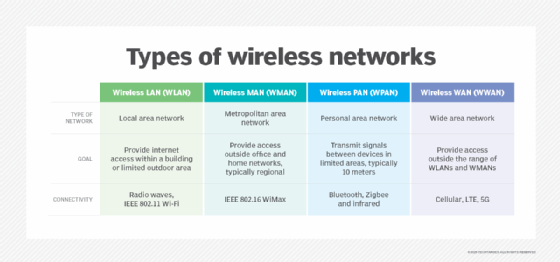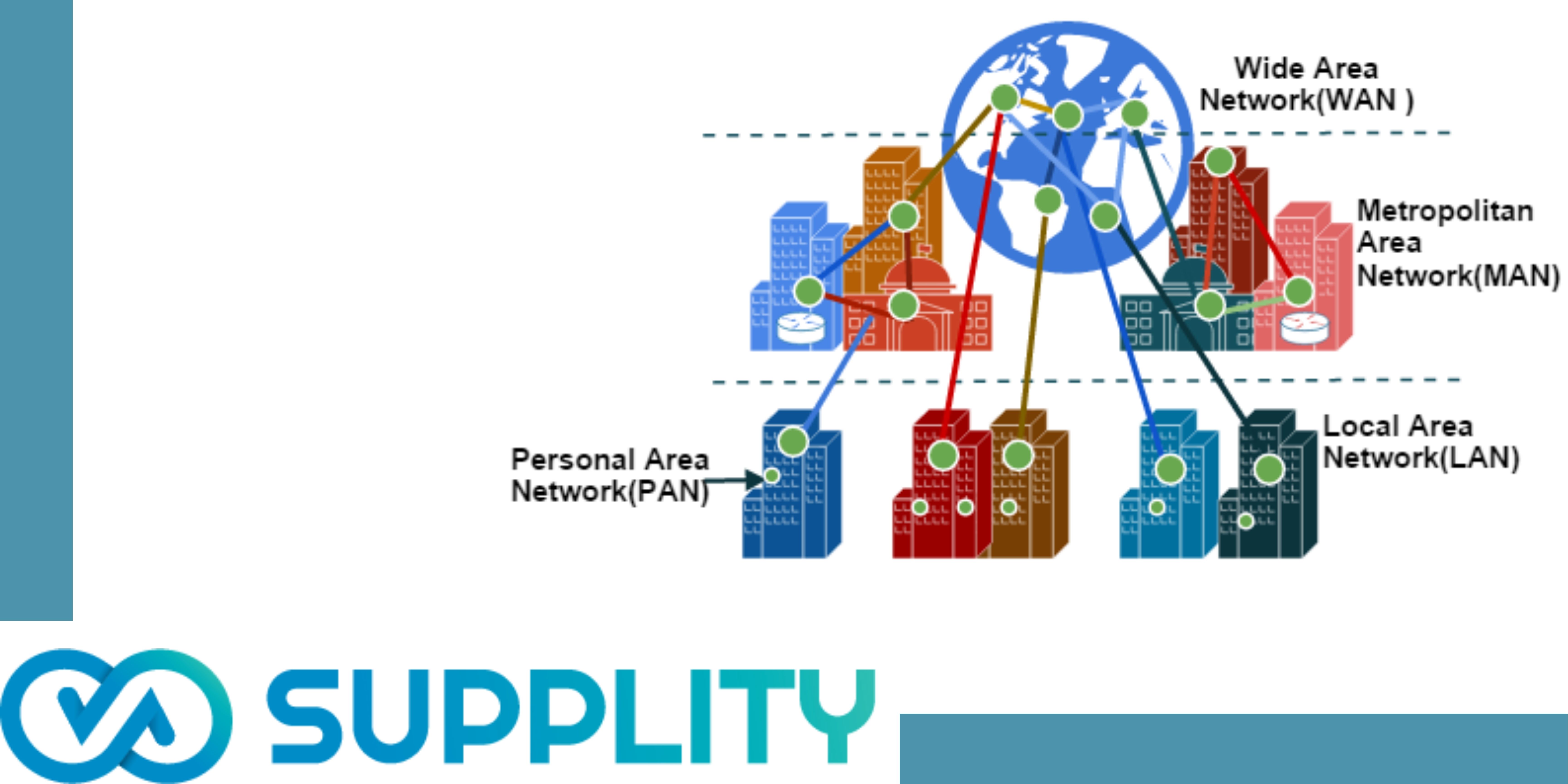There are four types of wireless networks -- wireless local area networks, wireless metropolitan area networks, wireless personal area networks and wireless wide area networks -- each with its own function.
Below we discuss the different types of wireless networks and the various equipment and connections they require.
1. Wireless LAN
Wireless LAN (WLAN) technology provides internet access within a building or a limited outdoor area. First used within offices and homes, WLAN technology is now also used in stores and restaurants. The use of home networks has greatly increased as the COVID-19 pandemic has forced office workers, students, teachers and others to work and study from home.
Most home network designs are simple. A modem connects to the cable or fiber from a local service provider. A wireless router is connected to the modem and receives the signal from the modem, which it then broadcasts using a wireless protocol, such as the 802.11 standards.
Office networks are more complicated. Access points (APs) are mounted on the ceiling, with each broadcasting a wireless signal to the surrounding area. Multiple APs are required in large offices, each connecting to the office backbone network via a wired connection to a switch.
2. Wireless MAN
Wireless metropolitan area networks have been installed in cities worldwide to provide access for people outside an office or home network. These networks cover a wider area than office or home networks, but the principles are the same. APs are located on the sides of buildings or on telephone poles throughout the coverage area. APs are connected to the internet via a wired network and broadcast a wireless signal throughout the area. Users connect to their desired destination by connecting to the nearest AP, which forwards the connection through its internet connection.

3. Wireless PAN
Wireless personal area networks cover a very limited area -- typically a maximum of 100 meters for most applications -- using protocols like Bluetooth and Zigbee. Bluetooth enables hands-free phone calls, connects a phone to earpieces or transmits signals between smart devices. Zigbee connects stations along an IoT network. Infrared technology is limited to line of sight, such as connecting TV remotes to televisions.
Wireless developers have constantly improved technology by discovering new ways to transmit signals to users. These advances enable higher data rates and an increasing range for each of these wireless technologies.
4. Wireless WAN
Wireless WANs use cellular technology to provide access outside the range of a wireless LAN or metropolitan network. These networks enable users to make phone calls to others connecting either through a wireless WAN or a wired telephone system. Users can also connect to the internet to access websites or server-based applications.
Cell towers are located nearly everywhere within the U.S. and most other countries. A user connection is routed to the nearest cell tower which, in turn, is connected either to the wired internet or to another tower connected to wired internet.









